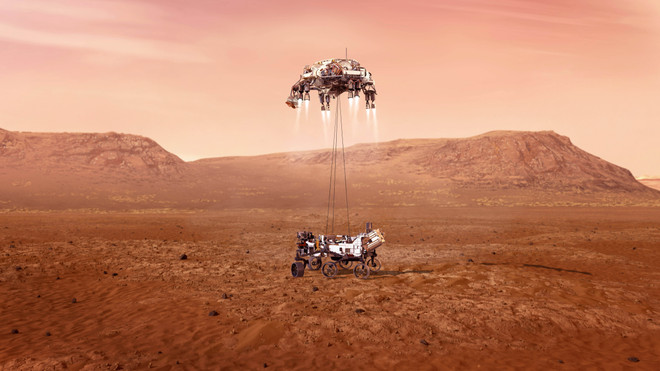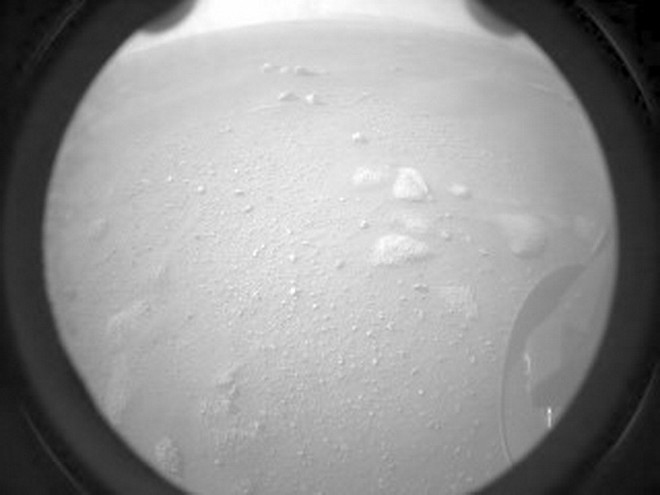In the past, the idea of sending humans to live on other planets seemed to exist only in science fiction novels, with romantic images: red deserts, domed buildings built on oases, human "colonies" on celestial bodies from which two Suns could be seen...
But the 21st century has changed everything. Today the question "Can we live on Mars?" no longer sounds like a question to be raised at a purely philosophical conference, but rather like a technical problem to be solved. So where is the line between dream and reality?
Why was Mars the first planet chosen?
Have you ever wondered why scientists are looking towards Mars as the first planet to carry out large-scale "colonization" plans?
In fact, among all the planets in the Solar System, Mars is the most suitable candidate for humans to choose to build their “second home” (after Earth).
Living conditions there are similar to those on our Earth: the weather on Mars also changes according to the seasons, a day there is 24 hours and 39 minutes long (on Earth, a day is 24 hours and 3 minutes long), Mars also has a solid surface and even has water in the form of ice blocks.
So what problems does the Mars "colonization" project still have?
First of all, moving to Mars is not as simple as pitching a tent and living on the savannah. We have to overcome a series of technical, biological, and psychological challenges. Modern science seems to have almost everything under control. But before moving to another planet to live, you need to assess all the risks. And there are many risks on Mars.
Scientists will have to tackle many layers of technical, biological and psychological challenges, including issues of atmosphere, temperature and radiation.
The atmosphere on Mars is almost entirely carbon dioxide. Humans from Earth would not be able to breathe normally in that atmosphere.
The average temperature on the surface of the Red Planet reaches -60 degrees Celsius, and in winter it can drop to -125 degrees Celsius. In such conditions, the human body cannot endure for long, even when wearing the best protective suit.
During their studies of Mars, scientists discovered that the planet has no magnetic field, which means that the surface of Mars is not protected from harmful cosmic radiation. These rays would quickly destroy human body tissues. In addition, the gravity on Mars is only 38% of that on Earth.

Scientists are still uncertain about how long-term exposure to such an environment will affect human health.
But what we can know for sure right now is that such a living environment puts a lot of stress on the body, which can negatively affect a person's physical and mental state.
The negative psychological consequences for astronauts of having to live in long-term isolation from human society cannot be ignored either.
Astronauts, or “future settlers on Mars,” will have to live in a confined space with a minimum 20-minute delay in communication with Earth. All of these factors weigh heavily on their psychology.
So what has science done so far?
Mars is currently being studied and explored by robots: NASA's rovers (Curiosity, Perseverance) are operating on the surface of Mars, and unmanned research stations from the United States, Europe, China, and India are orbiting Mars. They analyze soil, search for water, and study the climate on the Red Planet.
The US space agency NASA is planning to conduct manned flights to Mars in the second half of the 2030s.
In the Arctic and desert regions, and even in underground tunnels, scientists and engineers are simulating weather, climate, atmosphere, gravity, magnetic field... conditions similar to those on Mars.
Billionaire Elon Musk and his company SpaceX are paying special attention to this project. He is probably one of the few people who not only spends time studying Mars but also intends to fly there himself.
SpaceX's main project right now is Starship - a super rocket capable of carrying up to 100 tons of cargo and about 100 people into space orbit.
Mr. Musk has repeatedly stated that his goal is to create a self-sufficient scientific research station, with facilities for astronauts to live and work permanently on Mars.
According to Elon Musk's projections, the first humans could land on the Red Planet in the next 10-20 years. Is it too ambitious? Yes. But with SpaceX's recent successes in space exploration and research, this projection is well-founded.
SpaceX is currently testing automated technologies to ensure the survival of astronauts: air and water recycling systems, solutions for astronauts to move on the surface of the Red Planet as well as systems to protect them from "bombardment" of cosmic radiation.
Is it possible to build a house to live and work permanently on Mars?
It’s hard, but possible. The initial concept for a future home for astronauts on Mars is: enclosed dome structures, tunnels dug deep into the Martian surface – where offices and bedrooms would be 3D printed with materials made from Martian soil. The energy to run this home? Solar energy, of course.
What about oxygen? It would be produced locally by recycling CO2 emitted by human activities. Or it could be grown to produce oxygen. And water would be produced by melting ice beneath the surface of Mars.

Building a human home on Mars would be impossible without hundreds of preliminary tests. We need to be sure: can we grow potatoes on Martian soil? How can we ensure the long-term health of astronauts in low gravity conditions? How can we help astronauts fight depression in long-term isolation?
In short, there are many questions that need to be answered. So, is the idea of humans living and working on Mars close to reality or is it still just a dream?
The problem facing scientists today is that sending humans to explore Mars in the next 10-20 years faces many complex technological challenges. Obviously, this is not a romantic adventure for brave people.
But with every rocket launch toward Mars, with every cubic meter of scientific equipment transported to the Red Planet, with every experiment conducted by robots on Mars, our dream moves closer to reality.
It is likely that the plan to send humans to Mars will be postponed for a few more decades. But let's hope that the first permanent settlers will appear on Mars this century.
And Earth's humans will certainly take the first steps towards the status of an intelligent species living simultaneously on many planets./.
Source: https://www.vietnamplus.vn/lieu-con-nguoi-co-the-song-va-lam-viec-lau-dai-tren-sao-hoa-duoc-khong-post1039192.vnp






























![[Photo] National Assembly Chairman Tran Thanh Man visits Vietnamese Heroic Mother Ta Thi Tran](https://vphoto.vietnam.vn/thumb/1200x675/vietnam/resource/IMAGE/2025/7/20/765c0bd057dd44ad83ab89fe0255b783)





































































Comment (0)